I am designing a constant current source to drive a laser diode. I need it to be adjustable (from 0 to 100mA max) and stable enough as I will be using it as a light source in a Foucault mirror tester for my amateur telescope mirror making project.
After some reading I came up with the following general design, however I have some questions.
- Is this an adequate design overall (not overcomplicated)?
- The signal on the non-inverting input of U5 will be just a DC setpoint. Can I just choose the cheapest op-amp available (lowest bandwidth) or are there other considerations I need to make?
- Should I care for loop stability and compensate for it (C2-R3 or other solution)?
- The current source needs to be current limited to not damage LD1. Should I size the feedback resistor R4 (with VD) with this in mind, or should I trust the circuit and configure the max current indirectly with R2-RV1 and set R4 for low voltage drop and to get an adequate voltage feedback?
Thank you for your help.
